* * *
After two days of pushing through jet lag to process hundreds of international children’s comics as a judge at the Bologna Children’s Book Fair, my subsequent travel to Paris is something of a blur. I have little memory of my trip, but it is well-documented that on Sunday, January 22, I did both board and disembark a flight from Bologna to Paris and arrive safely at the Belleville home of Sammy Stein and Séverine Bascouert, two members of the editorial team behind Lagon Revue, France’s premier avant-garde anthology of comics and graphics. Ensconced in hospitality and surrounded (again) by books, I crashed hard.

Nevertheless, I did wake up from my unscheduled nap in time to visit my favorite bookshop in Paris, Le Monte-en-l’air, which is, blessedly, open every day until 8:00 PM, a rarity among French bookshops. I pulled myself together and walked from Belleville to Ménilmontant, happy to be greeted by its familiar orange façade. Le Monte-en-l’air is a full-service bookshop with great offerings across categories, and an especially strong comics section. It is an excellent place to browse and get up to date on the latest from the independent publishers of Francophone comics, and carries plenty of hidden gems, including zines, minicomics, out-of-print back stock and exotic book objects. As I was between book festivals, I restrained myself from buying much. But I immediately grabbed a copy of the new reprint of Saga de Xam, the fabled psychedelic graphic novel by Nicolas Devil and Jean Rollin originally published in 1967 by Éric Losfeld. From the countercultural literature section, I also picked up a copy of La Nuit by Michèle Bernstein, the English-language edition of which was at that moment already nestled in my tote bag. When in France, read like the French.
Other stops during my visit to Paris included the Grand Palais, a museum I visited because it is closed. While under renovation, the museum’s temporary exterior fence has been covered by an eccentric, narrative infographic by Nayel Zeaiter, whose book Histoire du vandalisme illustrée comes highly recommended to me. The weather was rather chilly so I only saw part of the nearly 1km visual narrative; however, it will be on view for the duration of the three-year restoration currently underway at the museum, so I will hopefully have opportunities to take another look.
I was determined to spend one full day browsing the bookshops of Paris. I began, as usual, by walking to the Beaubourg to visit Librairie Super Héros, the best shop in Paris dedicated exclusively to new comics. Upon entry, I was stunned to encounter the familiar face and voice of the great German artist Kai Pfeiffer. I assumed Kai was in town for Angoulême, but no: he was, coincidentally, in Paris on an artist’s residency with no plans to visit the festival. Kai collaborated with Dominique Goblet on the brilliant, uncategorizable graphic novel Plus si entente, and Frémok will soon release a sequel. Kai has long been working on his own graphic novel, Maisons hantées, which promises to be similarly intriguing once complete.

Shock of shocks: Kai and I had both planned to spend some time wandering through Parisian bookshops that day, so we continued together to the nearby Librairie Wallonie-Bruxelles, which specializes in work by (and relating to) Francophone Belgian literature, and has a very good comics section. Our bookish dérive led us to le Marais, the oldest part of Paris, where we began searching for a lunch spot that was neither too touristy nor too pretentious. I felt that lightning had struck when we entered La Tartine, a cozy, lived-in spot where we joked around with the manager and patrons sang along to songs from his playlist. Only afterwards did I learn that the place had once been a haunt of Leon Trotsky and James Joyce.
Kai and I parted ways as we approached the Seine. I crossed the river, eager to visit more bookstores on the Left Bank. Continuing my pursuit of Éric Losfeld’s pop comics, I finally picked up a copy of Guy Peellaert’s Pravda, la survireuse. I finished my day with what has become a near-tradition during my pre-Angoulême visits to Paris: tajine dinner with Jean-Christophe Menu and Laura Park. Jean-Christophe was clearly excited to be once again publishing books under his L’Apocalypse imprint (this time a new book by Sophie Darcq).
The next day, I returned to the Beaubourg to see the Christian Marclay exhibition at the Centre Pompidou. Staying on-topic, I was aware that some of Marclay’s work employs imagery from comic books, though the examples of that work I’d seen in the past hadn’t impressed me as much as his conceptual film The Clock, which I was hoping to revisit. Unfortunately, The Clock was not included in this otherwise fairly comprehensive exhibit. However, the absence of that show-stealing 24-hour film heightened the exhibit’s overall focus on Marclay’s career-long exploration of visual expressions of sound, from collaged record covers to modified musical instruments. This branch of work also includes a musical score made out of collaged elements from comics—which has been performed—and a “manga scroll.”
The most striking work along these lines was Marclay’s 2014-2015 immersive installation Surround Sounds, in which the visitor is surrounded by video projection of comic book sound effects animated to evoke the sound each onomopoeically describes. Reviewing the video clips I shot with my phone as I assembled this travelogue, I was surprised to be reminded that the installation was entirely silent. Clearly there’s something to this. It was also amusing to note that at this point in time, “generic” comic book sound effects look less like the hand-lettering evoked by Lichtenstein and more like late-'90s products of Richard Starkings’ Comicraft.
Afterwards I whizzed through the Pompidou’s Bibliothèque publique d’Information (Bpi) to take a quick look at a small exhibit focusing on Serge Gainsbourg’s writing practice. The exhibit included items from Gainsbourg’s library at the time of his death including an issue of the French comics journal Giff-Wiff, a Tarzan volume, a book of Placid and Muzo, a copy of Éric Losfeld’s autobiography (him again), and an English-language copy of As You Like It, Charlie Brown.
I then proceeded to the Semiose gallery to see a group exhibition including all of the originals from Aidan Koch’s mini kuš! Man Made Lake. Curated by Anthony Cudahy, The Minotaur’s Daydream featured work by 10 American artists. The only comics among an exhibit of drawings and paintings, Koch’s work shared the show’s overall preoccupations with bodies, art as index of the body, and the human as a point of contact between natural and synthetic worlds.
Having confirmed that every exhibit in Paris is somehow a comics exhibit, it was then time for me to retrieve my possessions and take an afternoon train to Angoulême. It was Wednesday, the “professional day” of the show, which I had skipped. My big plan was to spend Thursday, the first day of the show proper, visiting exhibits before it got too busy, leaving me Friday and Saturday to look at books and visit with friends. After that, I planned to return to Paris for a bit more downtime on Sunday before returning to the US on Monday, January 30. The next day, Tuesday the 31st, the massive general strike that had paused immediately before my arrival would once again be on, halting transportation and other services in protest of the Macron government’s plan to reduce the French retirement age.
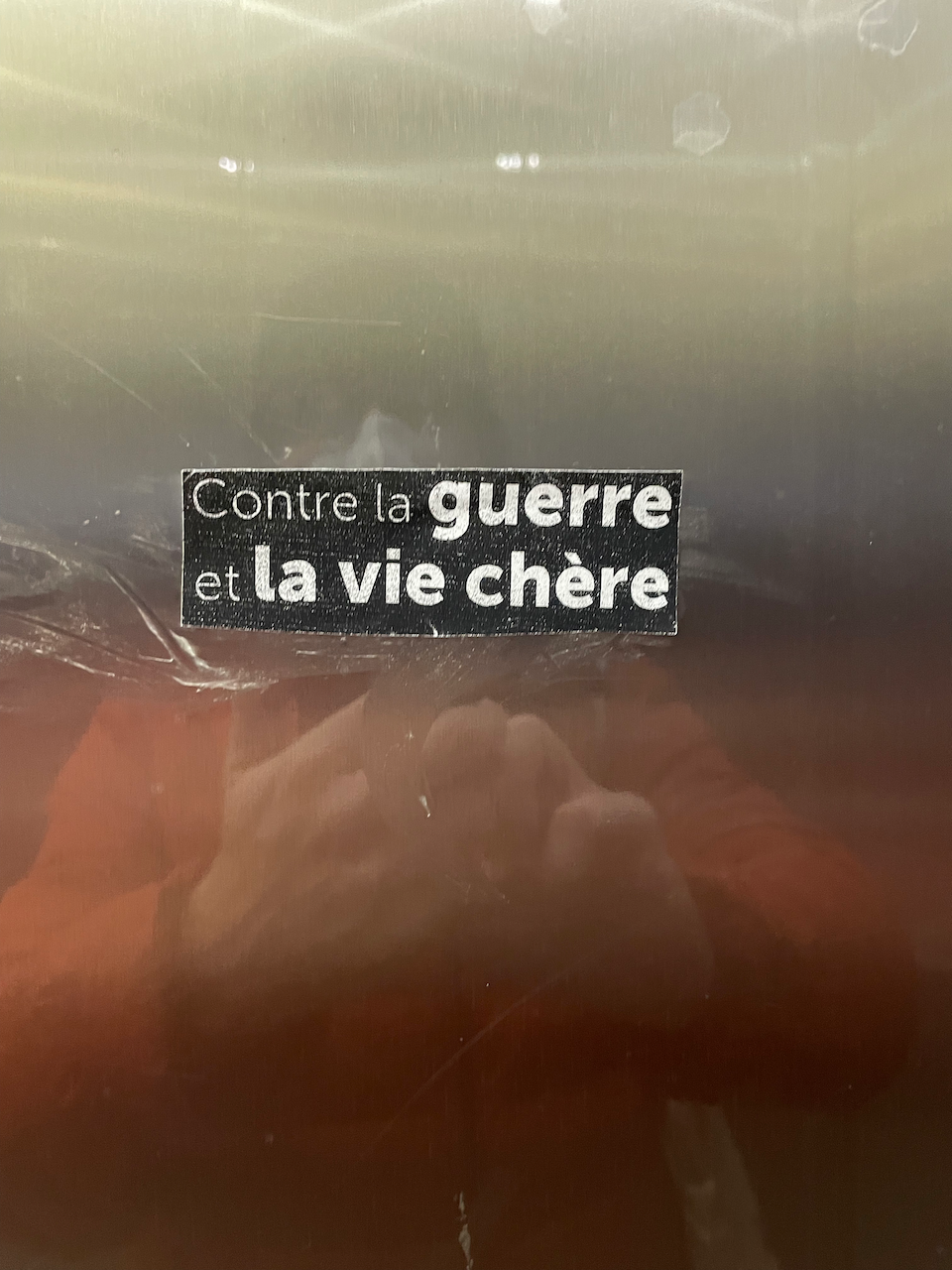
There was a sense of pause—and parentheses—in France during this trip. The simmering tension between France’s government and a great mass of its people was evident even in Angoulême in signs and banners hanging from L'École européenne supérieure de l'image (EESI), the local art school which specializes in comics and comics studies. Slogans announced that schools of art were joined in the greater struggle, and declared solidarity between students and professors.
Another armistice in a simmering conflict was signaled by more graffiti, this time opposing sexism in the French comics industry and harmful depictions of pedophilia. The latter was in reference to the Festival’s initial plans to include an exhibition devoted to the work of Bastien Vivès, which was cancelled after public outcry. Principle among other issues were complaints about works by Vivès which depicted minors in sexual situations, including depictions of incest, within the context of Glénat’s Porn'Pop erotic imprint and the BD Cul series of humorous erotic comics, initially published by Les Requins Marteaux and more recently taken over by Le Monte-en-l'air.

The graffiti and absence of the planned exhibit both mutely testified to the conflict that had taken place, but I heard little discussion of the issue at the festival. As one editor told me, “There is nothing left to say.” My general sense is that many agreed that the cancellation of the exhibition was appropriate, and perhaps that the event should never have been planned - particularly at this festival, a post-#MeToo festival, the 50th anniversary festival, and one featuring Julie Doucet as its guest of honor. However, the story does not end there. A criminal investigation has been launched against Vivès and the two publishers of the above-named works, under a 2021 law prohibiting pornographic images depicting minors. I suspect there is less consensus behind the appropriateness of this legal development and that debate over Vivès’s work and the issues raised here will continue in the French comics community.
Finally, the FIBD is an international festival on the European continent, and there was more conversation about Russia’s war on Ukraine than one might hear at an equivalent American festival. A Russian colleague known to many fled the country when Putin announced the military conscription of civilian men. He was present at the Festival, and temporarily residing in France. However, his situation in France was unstable, his means of income had disappeared, and his partner and children were still in Russia.
Despite all of the uncertainty hanging in the air, Angoulême 2023 had its highlights. Artists I spoke to were all exuberant at the return of Julie Doucet as the guest of honor. The French edition of Time Zone J—titled Suicide total—was published as a true accordion book. While more expensive than the North American edition, this version matched the format in which the work was produced and avoided the loss of imagery and text in the book’s gutters. Despite the elevated price, every time I saw Doucet signing at L’Association’s booth there was an extensive line of readers waiting to get a dedicate. I expect they also did a brisk business selling the tote bag produced for the occasion.
Doucet’s exhibition at the Hôtel Saint-Simon, curated by Julien Misserey (who co-curated last year’s Chris Ware show), was exceptional. Beginning with childhood comics and fascinating early drawings, the show included a wealth of gorgeous original pages from across Doucet’s body of work in the medium. More importantly, the exhibit showed—really for the first time—Doucet as a full artist working in a variety of media, including collage, animation, artists’ books and woodcut printmaking. Despite commonplace notions that Doucet “left” comics, the exhibit makes clear that she is a multidisciplinary artist who has never stopped working, and that it does her no justice to see her career as delineated by her Dirty Plotte comic book series. Similarly, the exhibit clarified that Doucet had been a dedicated and active member of the international small press scene before her association with Drawn & Quarterly, self-publishing many issues of Dirty Plotte as a zine and maintaining a dedicated correspondence. Vitrines included years' worth of mail to and from artists including John Porcellino, Matti Hagelberg and Jean-Christophe Menu.
One of the festival’s other blockbuster exhibits was the Junji Itō show at the Espace Franquin. The exhibition design—or scenographie—was executed in a style that I will simply refer to as 'piercing pagoda'. Regardless, the exhibit offered a large number of pages, including material from Itō’s early stories and many pages from his most popular books, including Uzumaki, Tomie, Gyo and Remina. The exhibition was less scholarly than the major manga exhibits that have characterized the Festival over the past few years under the creative direction of Stéphane Beaujean and with the curatorial participation of Xavier Guilbert. Nevertheless, the wall text and some design elements suggested that while Uzumaki may be Itō’s best known work in the US, in France, Tomie has been the focus of a great deal of critical attention. Itō himself was present at the festival, and long lines of visitors waited to enter, one at a time, into an enclosed glass room where he was signing books.
I went to the Musée d’Angoulême to see the Philippe Druillet exhibit. Druillet, who also started his career with Éric Losfeld, was among the co-founders of Métal hurlant and impressed many readers with his intensely detailed images, designed to create a sense of ancient time and monumental scale in the context of science fiction and fantasy narratives. Druillet’s original pages are large, poster-sized art boards, lavished with countless little lines to create a sense of scale and texture.
The baroque monumentality of Druillet’s work inspired an audio-video installation at a nearby chapel. Imagery from Druillet’s comics was formatted for moving projection across the gothic interior’s structure, accompanied by the Zombie Zombie track "Nusquam et Ubique", for which Druillet designed the music video.
The experience felt like being at a five-minute rave, without any drugs or dancing. I also could not help but note that despite the tonal difference, the Druillet chapel was strikingly similar to the Marclay installation I’d seen at the Pompidou: both sought to create an immersive experience by animating elements from printed comics.
These were all solid headline exhibitions. However, Angoulême has regularly been showing exhibits by equally important authors, executed at a very high level for years now. Consistent with the overall vibe, there was a sense of absence: although display signage and festival merchandise regularly reminded us that this was the grand 50th edition of the Festival, nothing in particular about the programming or organization of the event really marked the occasion or suggested that the Festival, as an institution, had anything to say about the evolution of comics over the past half century. In many ways, Angoulême performed in familiar ways and offered a successful show - certainly the crowds were back, in a big way. But I perceived a certain lack of vision for this year’s event, and that tonal shift suggests that Angoulême itself may be in a transitional phase, and it’s not clear what it will become.
The independently-organized Spin-Off small press event, however, is a reliable source of pleasure, surprise, and good times. There, I rejoined my erstwhile hosts, Sammy and Séverine, who were selling Lagon Revue wares and other works.

By day, the Spin-Off functioned both as an excellent small press fair and a chill place to hang out. By night, it became the site of regular parties. The first of these that I attended featured Sammy Stein himself among the DJs. I was impressed when he got the crowd moving to a cut from the Wicker Man soundtrack.
Although distant from the center of the Festival, this gathering place was welcome. Part of the vibe shift in Angoulême came from the definitive end of the Chat Noir restaurant’s history as a central hangout that could accommodate many people. Last year the bar was closed for renovations, so we made due with the much smaller Souris Verte, enjoying the mild March weather. However, the Chat Noir has now reopened and is nothing like its former incarnation. A bourgeois makeover has left it resembling nothing so much as a fern bar, so we were left again outside of the Souris Verte, but in chillier weather. At the same time, while circumstances dampened the usual group dynamic, I found myself having more one-on-one and small group conversations. I was warmed to run into a friend from Finland whom I hadn’t seen since 2014, and we were lucky enough to find a quiet spot to sit down and catch up. I may have seen fewer people this year, but I had deeper and longer conversations, and if that’s part of the change, it’s not unwelcome.
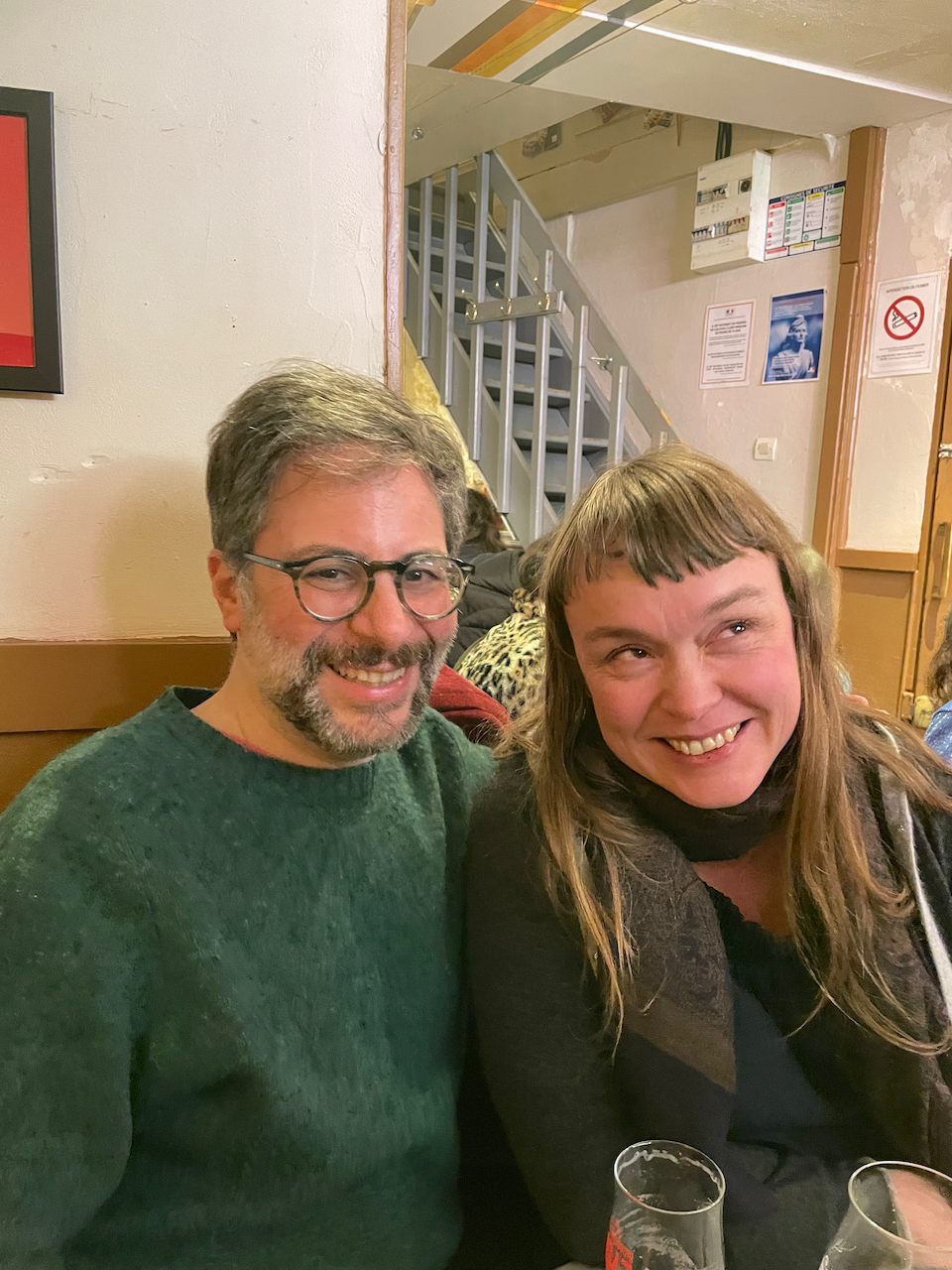
Another sad but welcome gathering was a small event organized by agent (and former underground cartoonist) Lora Fountain to celebrate the life of the late Aline Kominsky-Crumb. A group of her friends and admirers including Peggy Burns, Jean-Luc Fromental, Karen Green, Jean-Pierre Mercier and Rina Zavagli-Mattotti, gathered to share memories and space.

I managed to do everything I wanted to do in Angoulême on the schedule I had set for myself, and on Sunday, January 29th, I returned to Paris while the festival continued for one more day. But my journey through international comics was far from over. Upon arriving at Gare Montparnasse, I noted a display devoted to Julie Doucet’s work in the station.
Sunday night, I rejoined the Drawn & Quarterly crew: Publisher Peggy Burns; Senior Editor Tracey Hurren; Marketing Director Julia Pohl-Miranda; and Editorial Assistant Francine Yulo. We met at a very traditional French restaurant near the Bastille to celebrate Julia’s birthday, followed by drinks at a nearby bar.

But I was still not done. Earlier that evening, I had met with a colleague for a truly avant-garde appointment at the appropriately-named Café Dada. What did we discuss?
And the next day, before I could take my plane, I had to find my way to a DHL service point to retrieve a very large package that had been sent to me from Italy at the address of my Parisian hosts. What could possibly have been inside?
All may yet be revealed… but probably not this year. As with any good trip, while I was moving frantically from New York to Bologna to Paris to Angoulême and back again, other things were put into motion: thoughts and ideas and feelings subtly shifted inside of me, and relationships new and old gained dynamic energy. I don’t know how much of it is comics and how much is just life, but I know a big part of it is the people who I encountered in my travels, and I am grateful for them all.
* * *
More Pictures from the Festival International de la Bande Dessinée
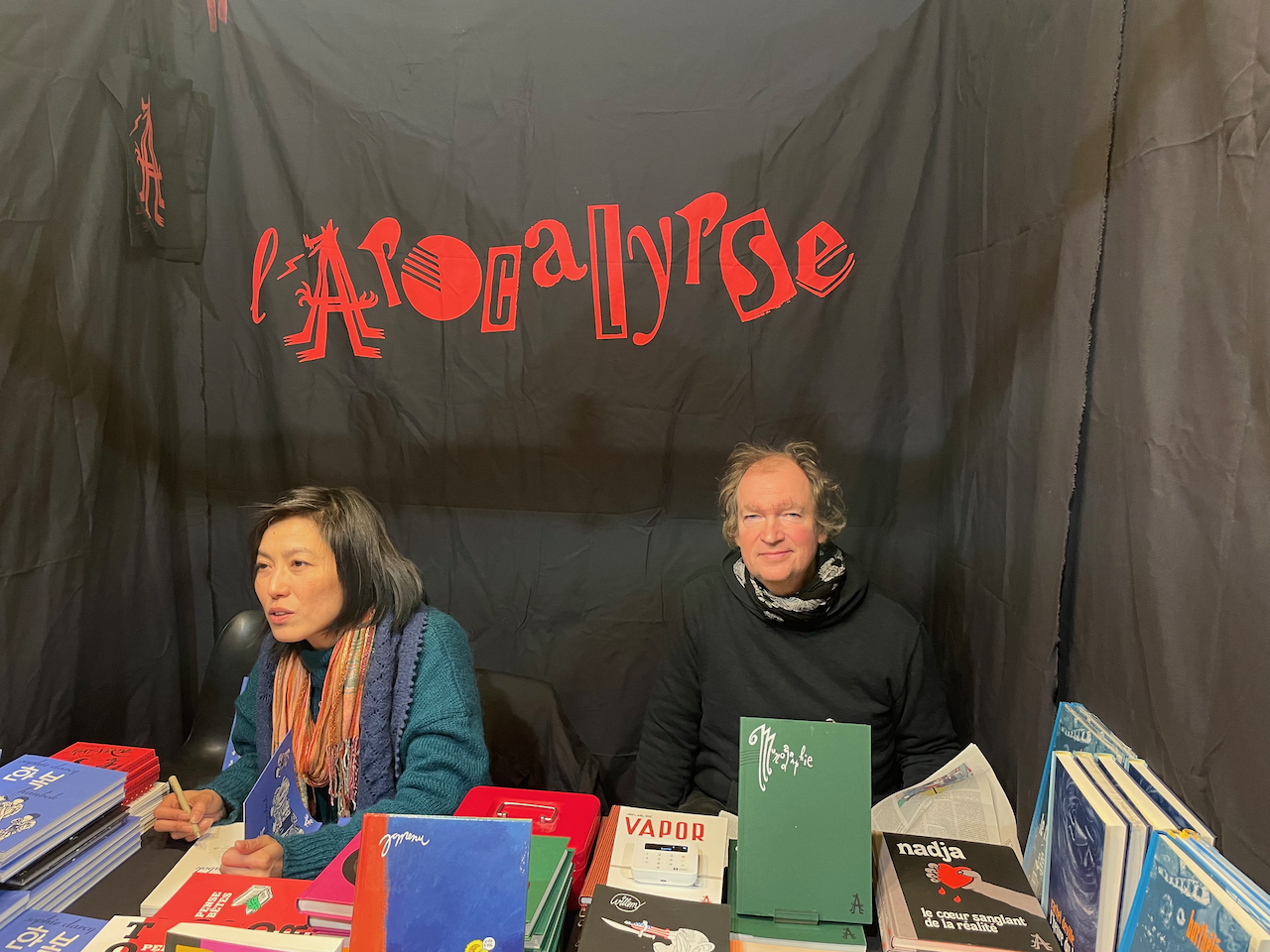
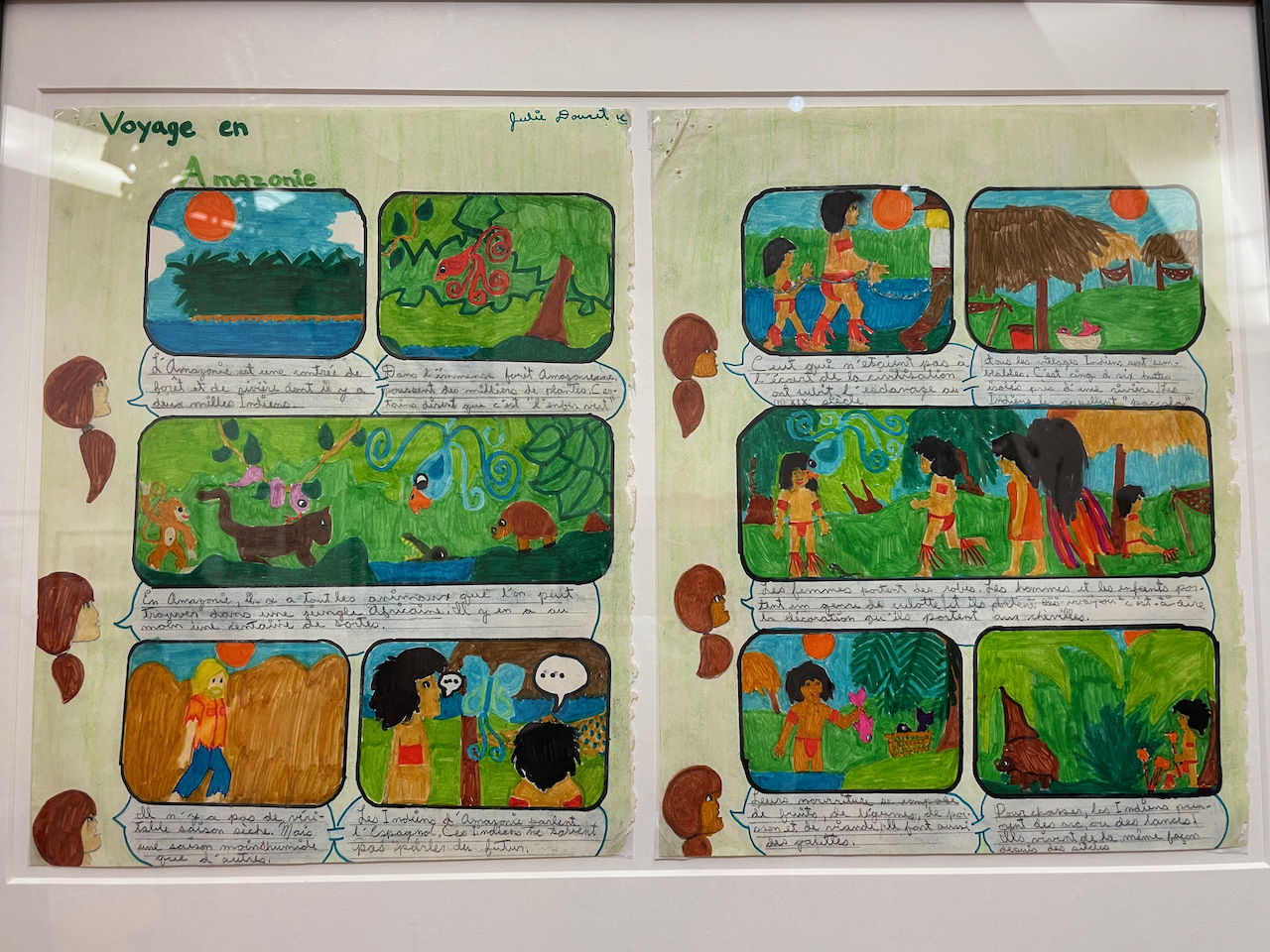

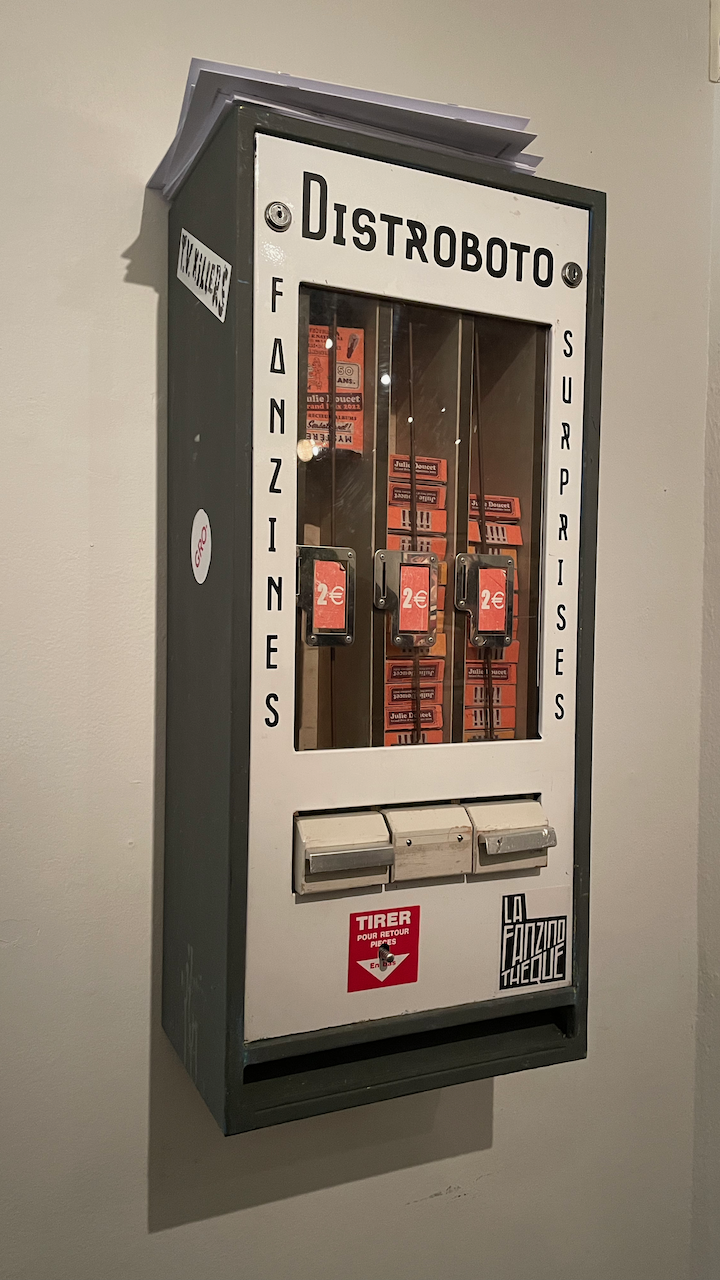
The post European Journal 2023, Part 2: Paris and Angoulême appeared first on The Comics Journal.
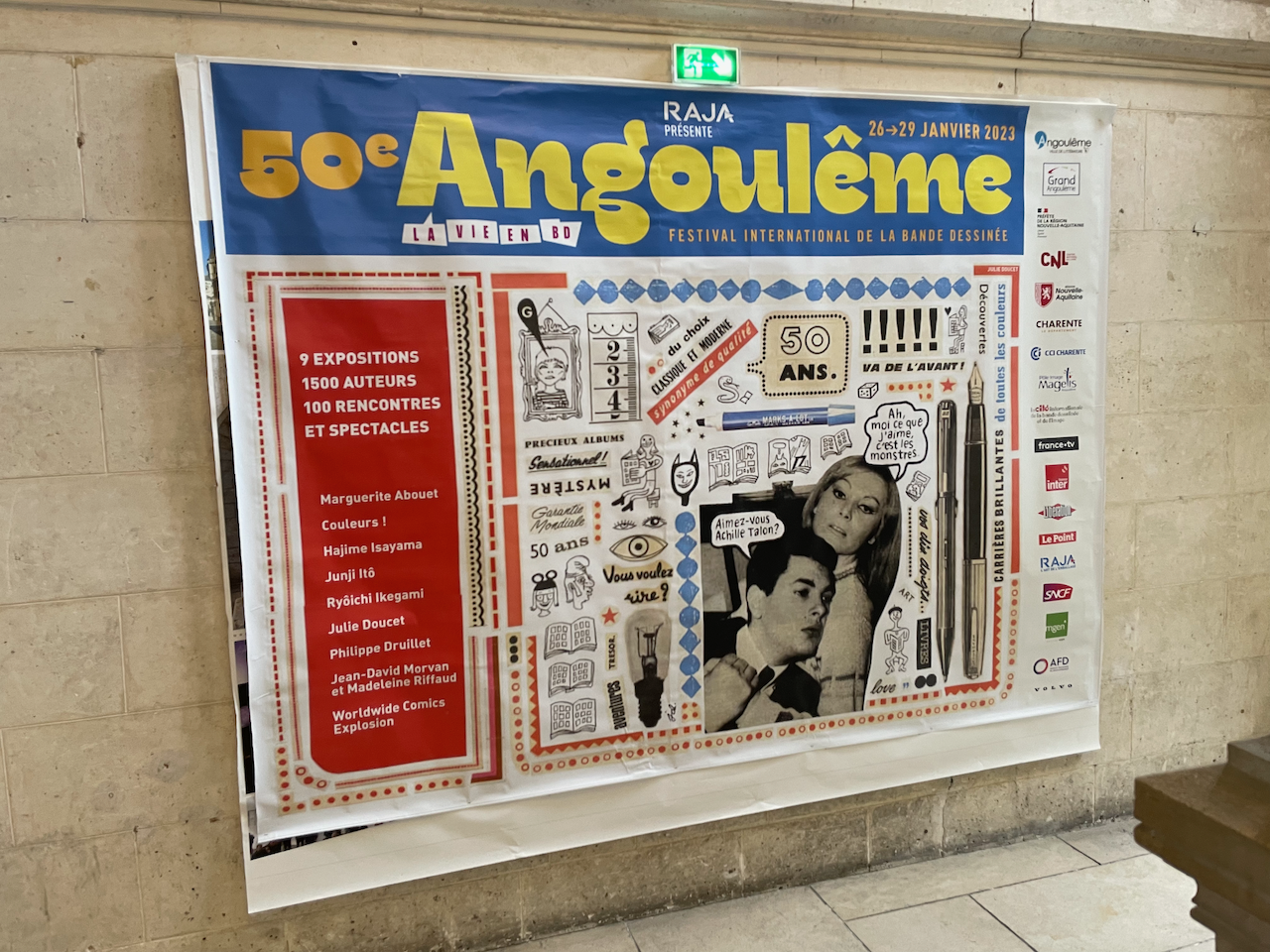

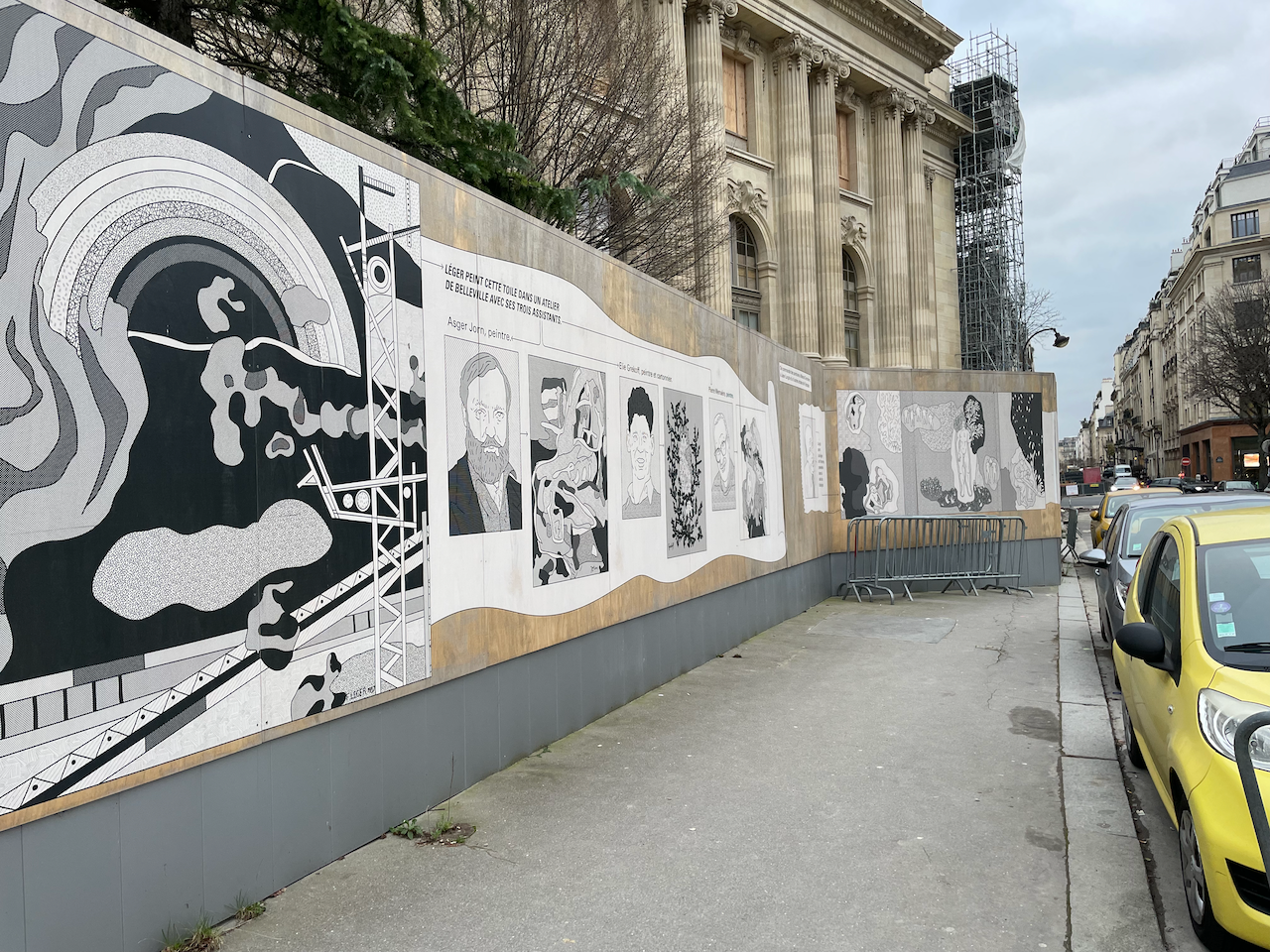

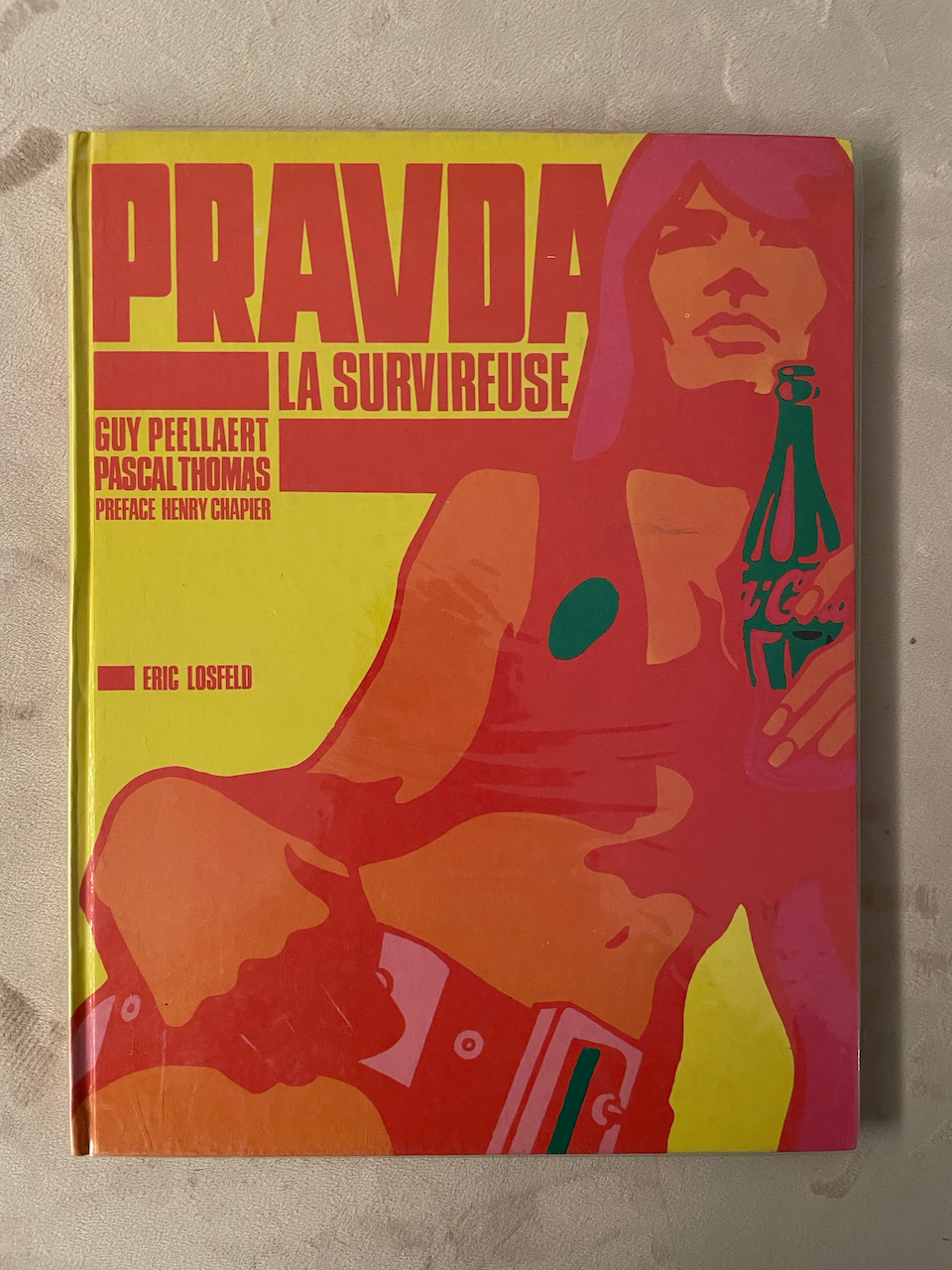
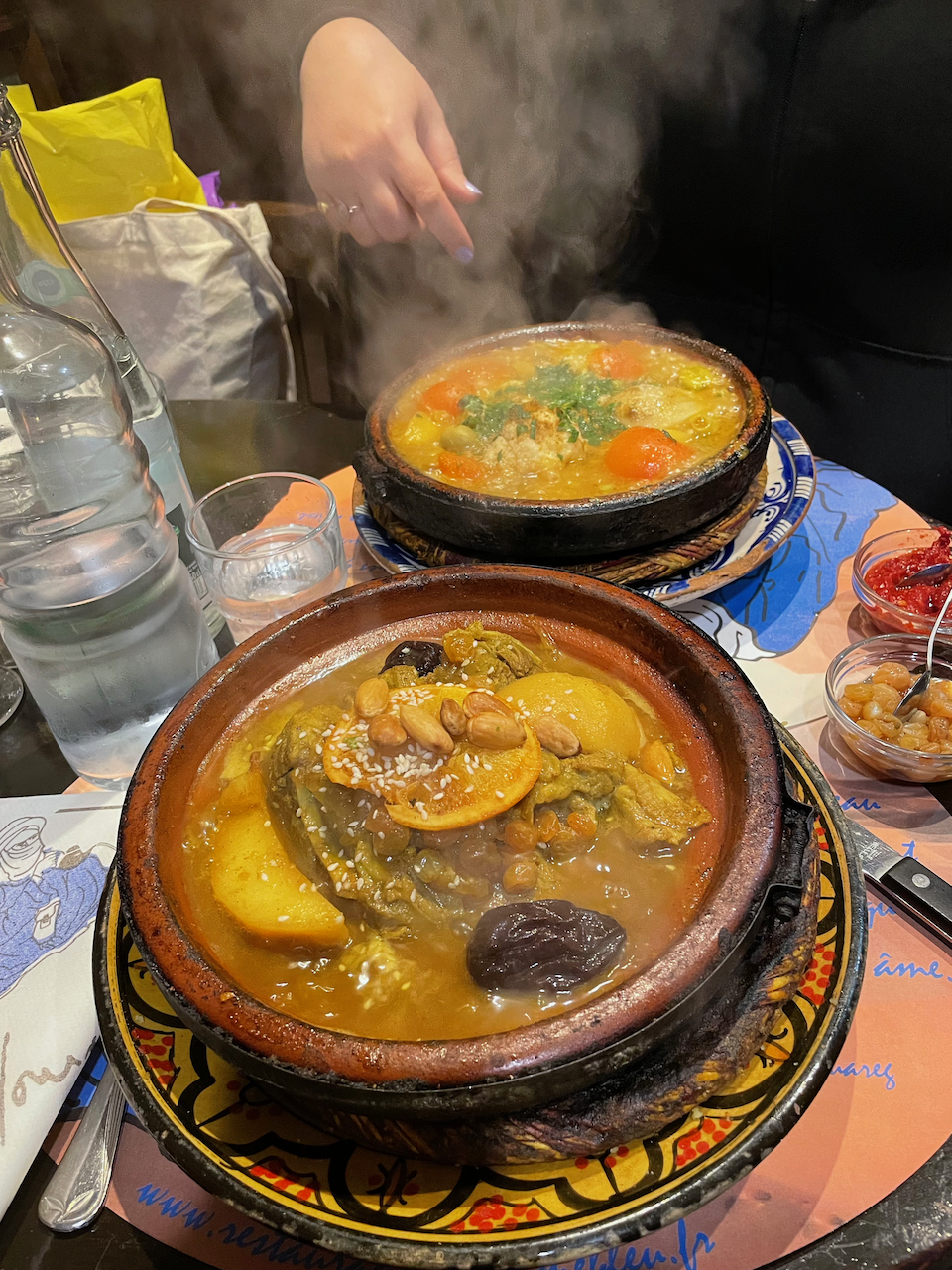
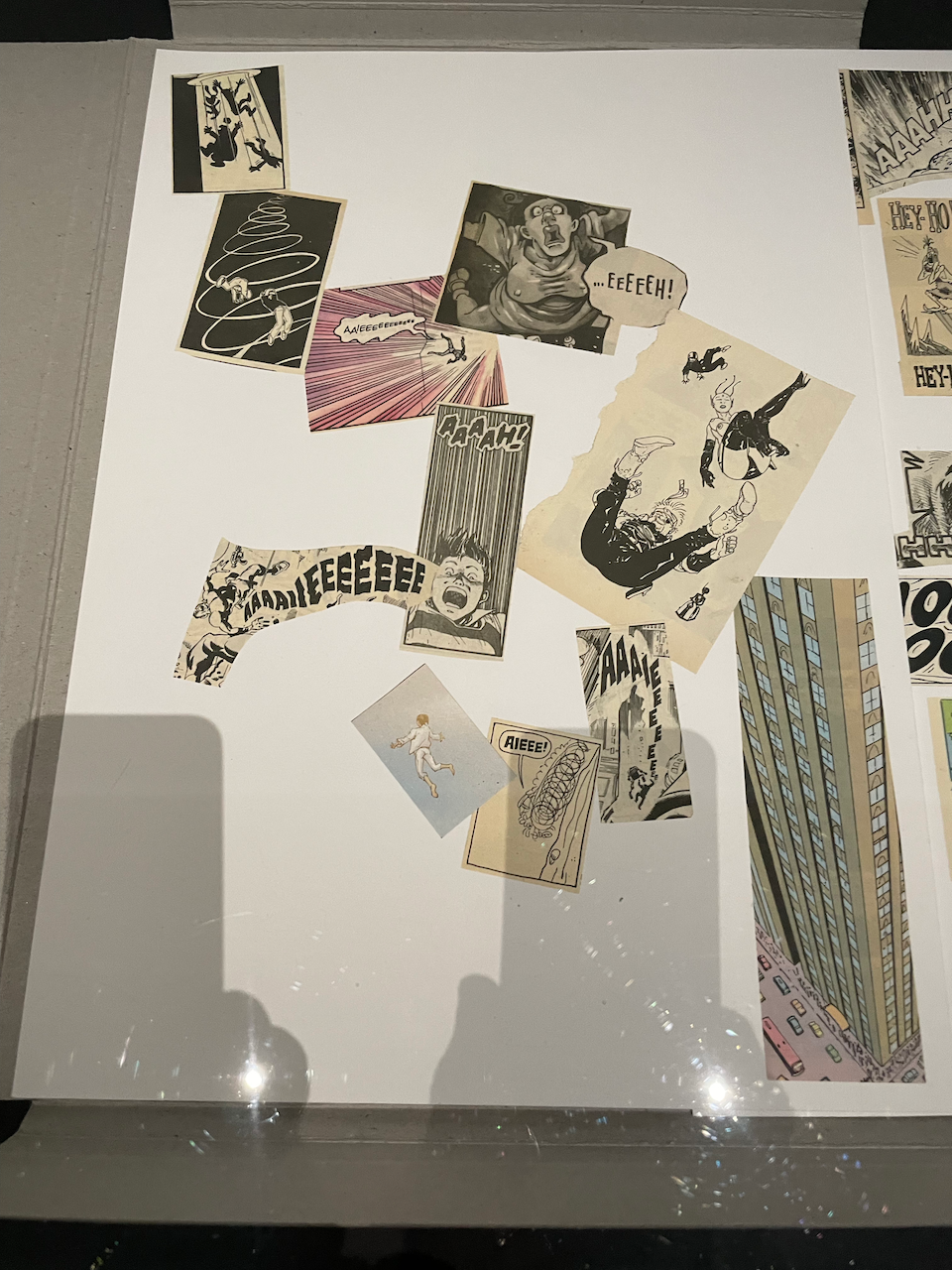




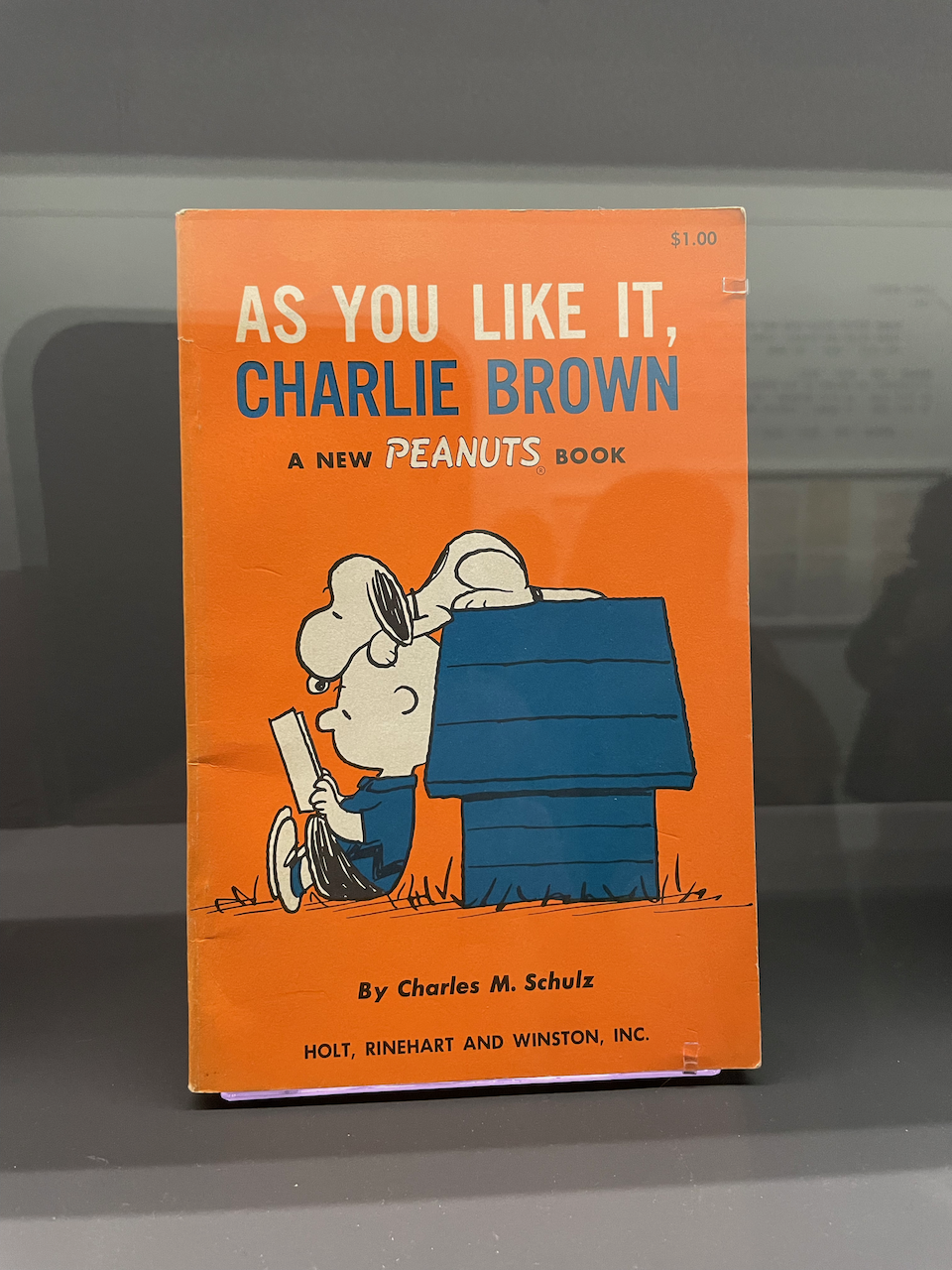


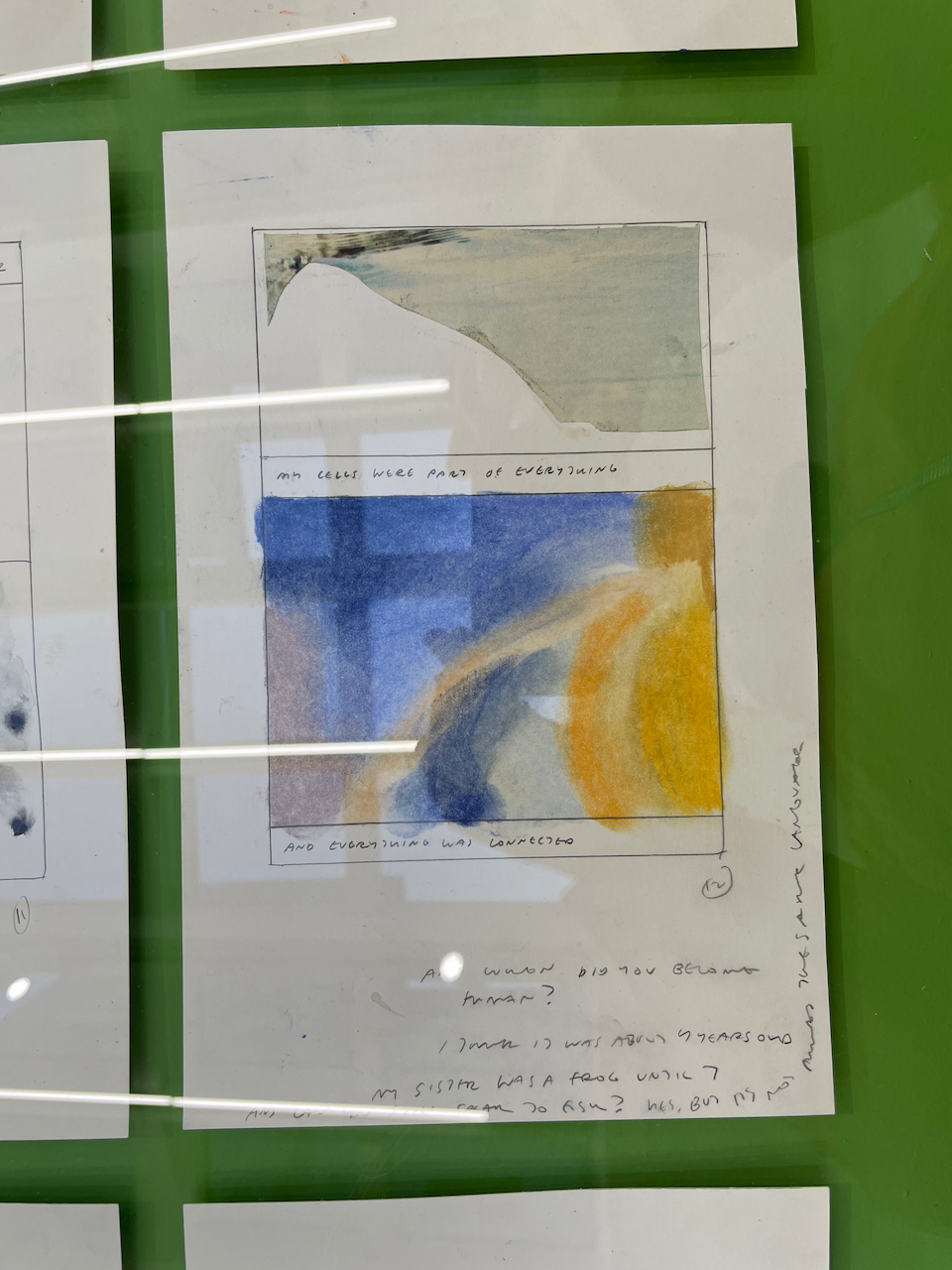

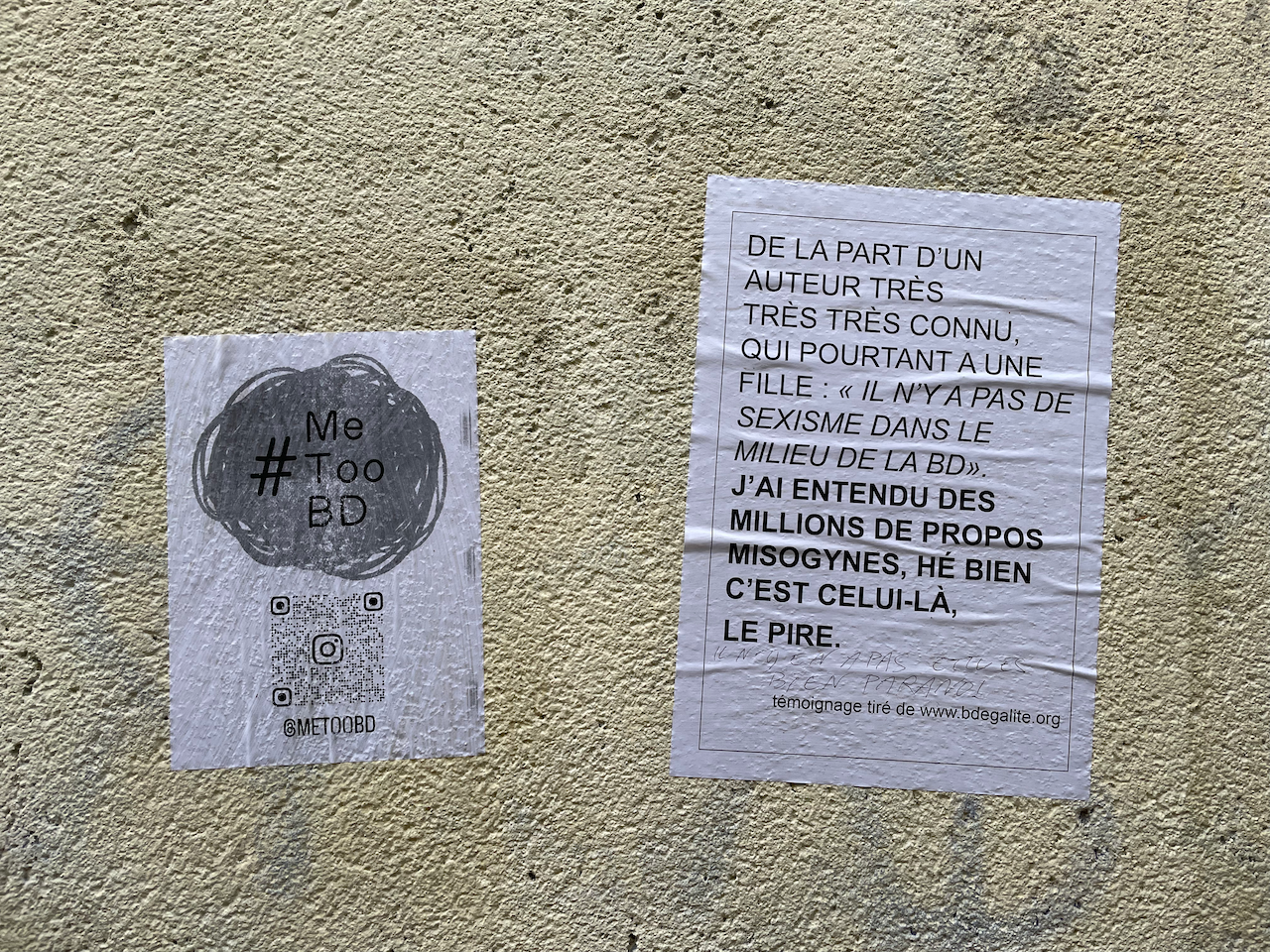


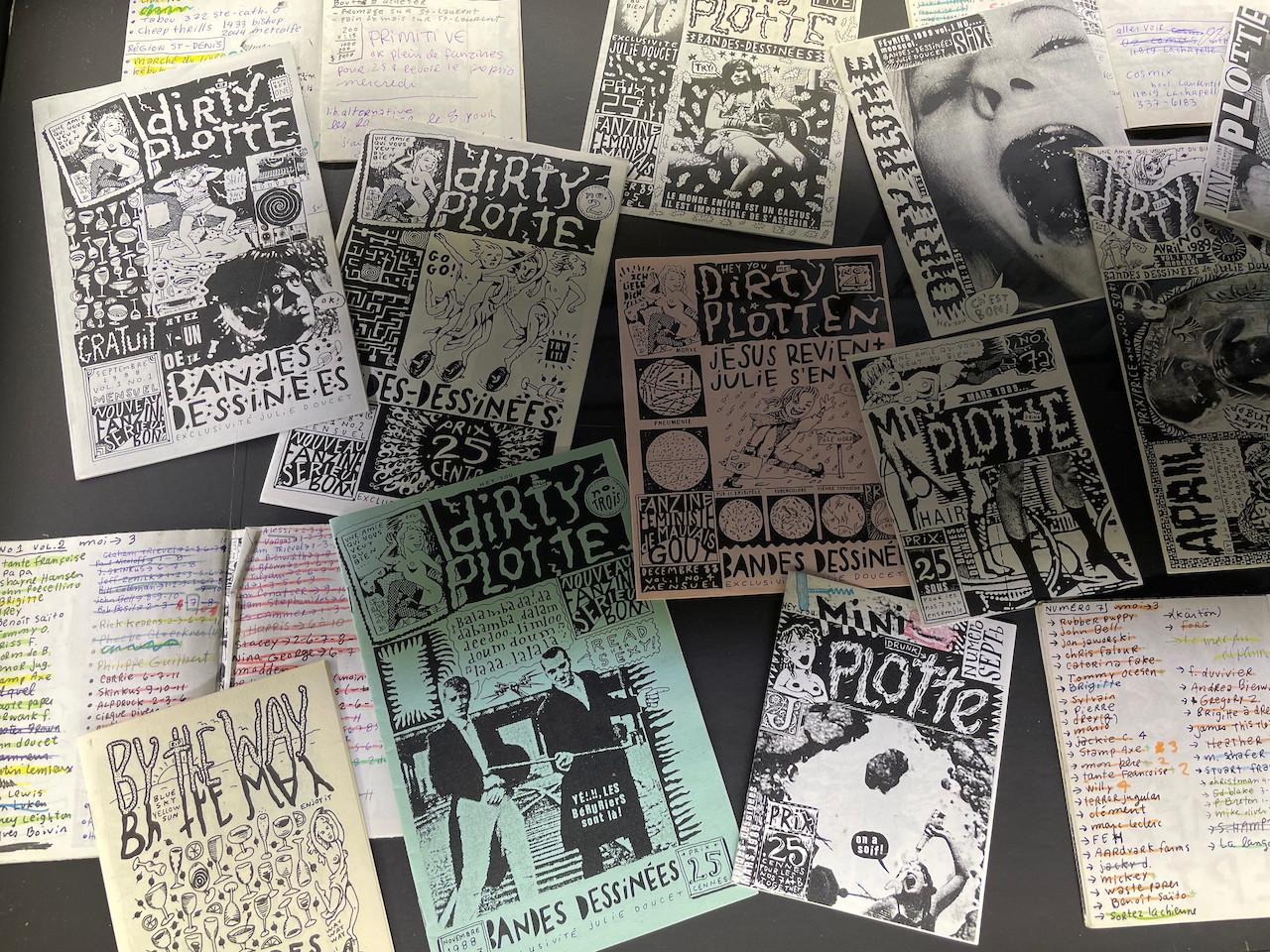

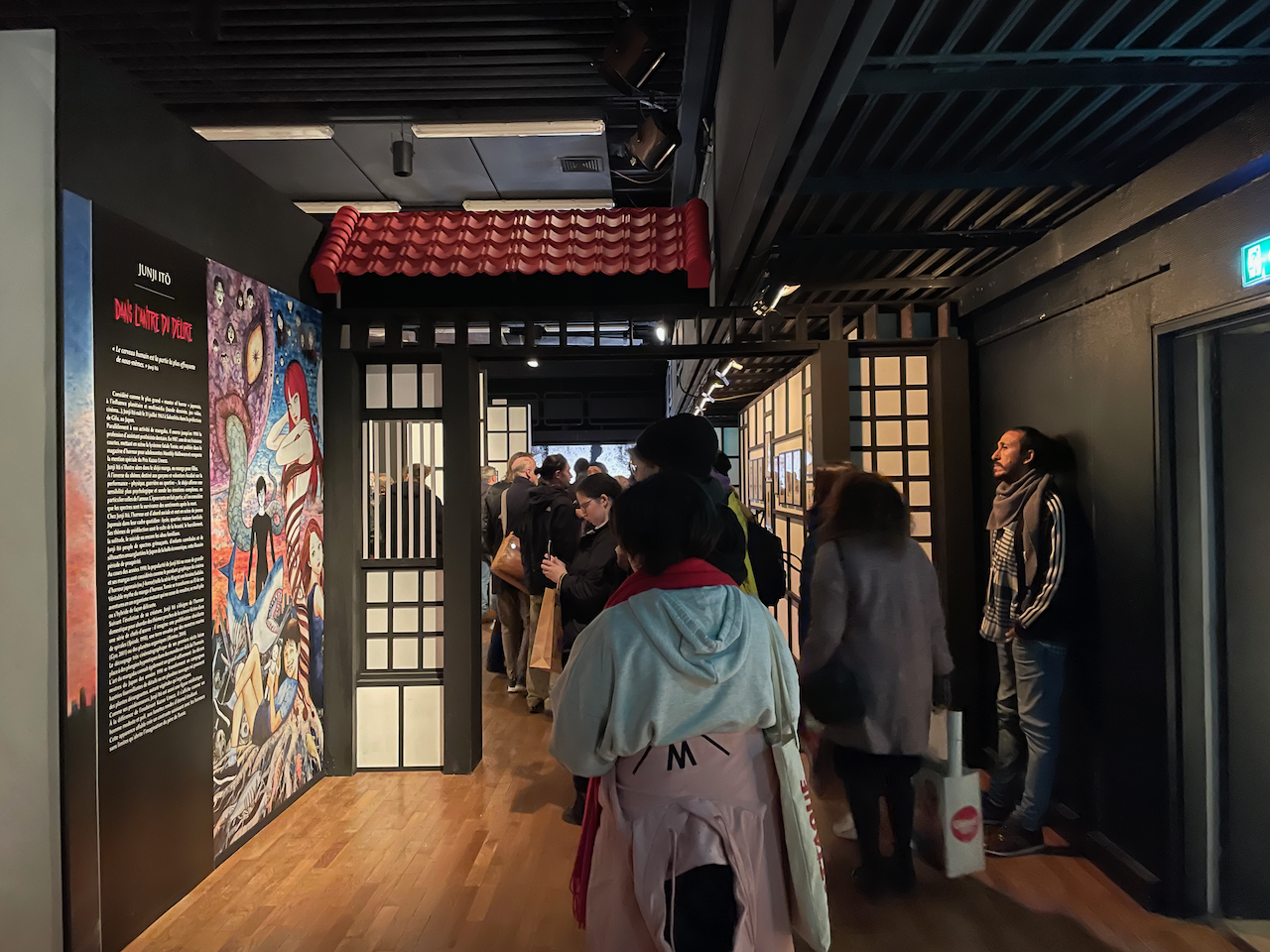


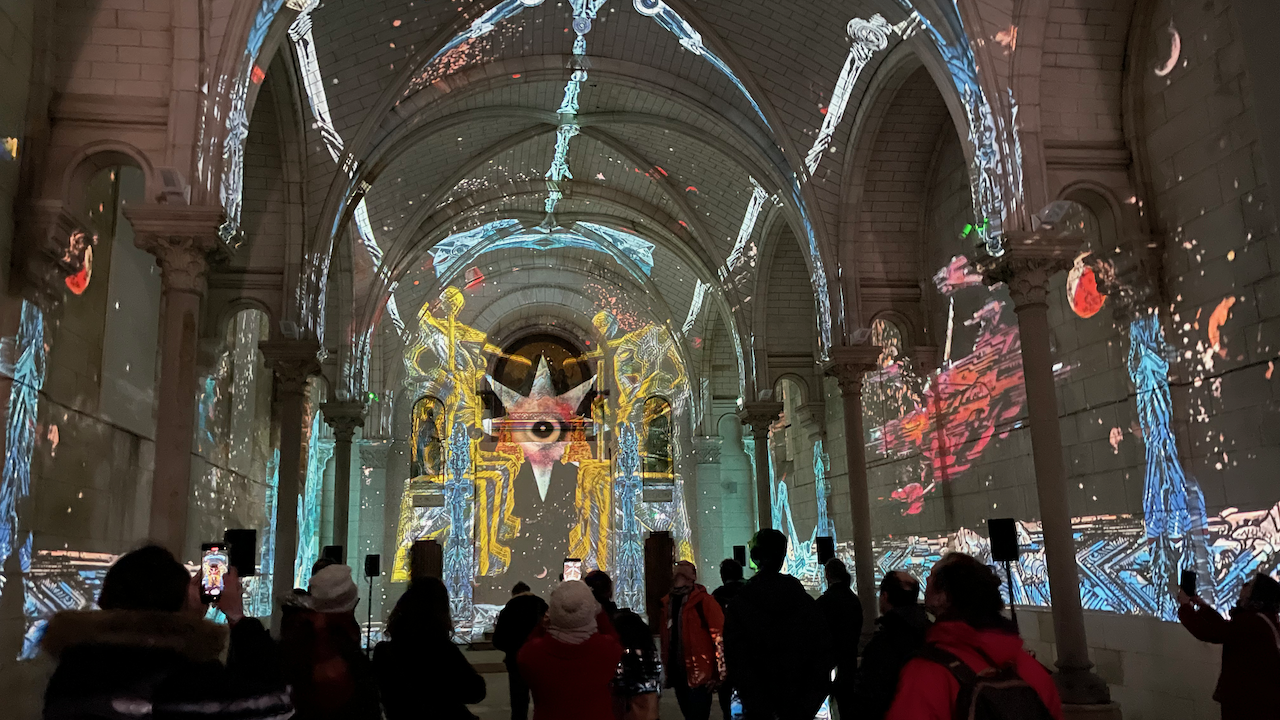
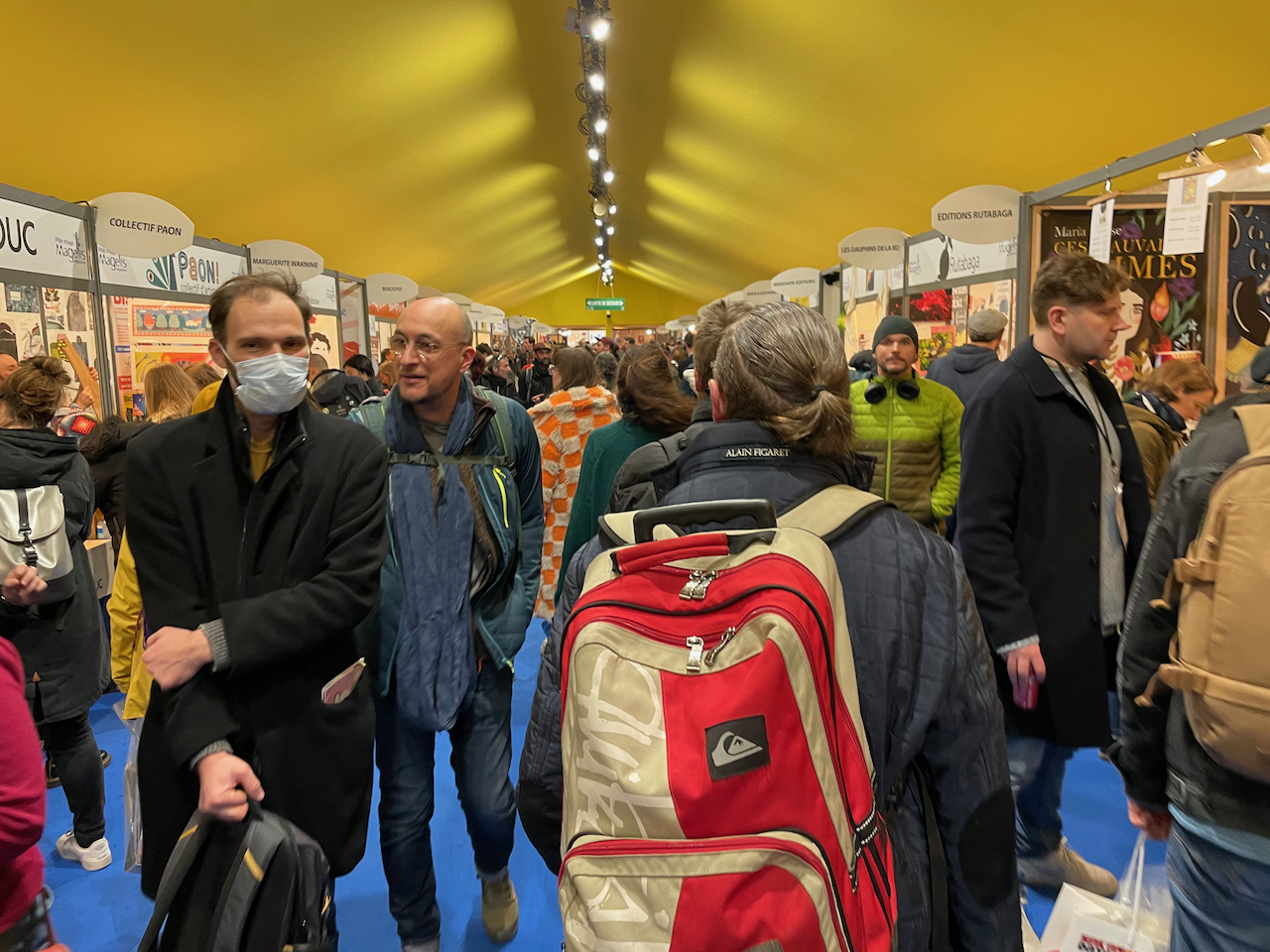



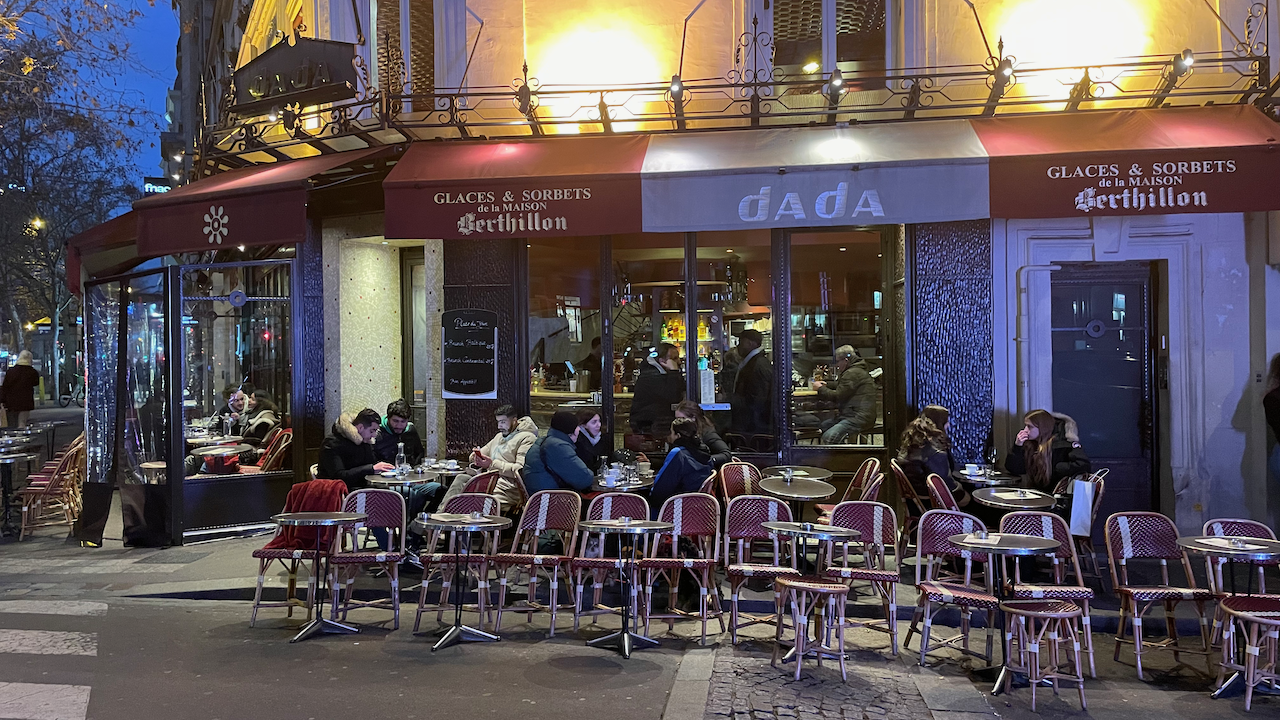
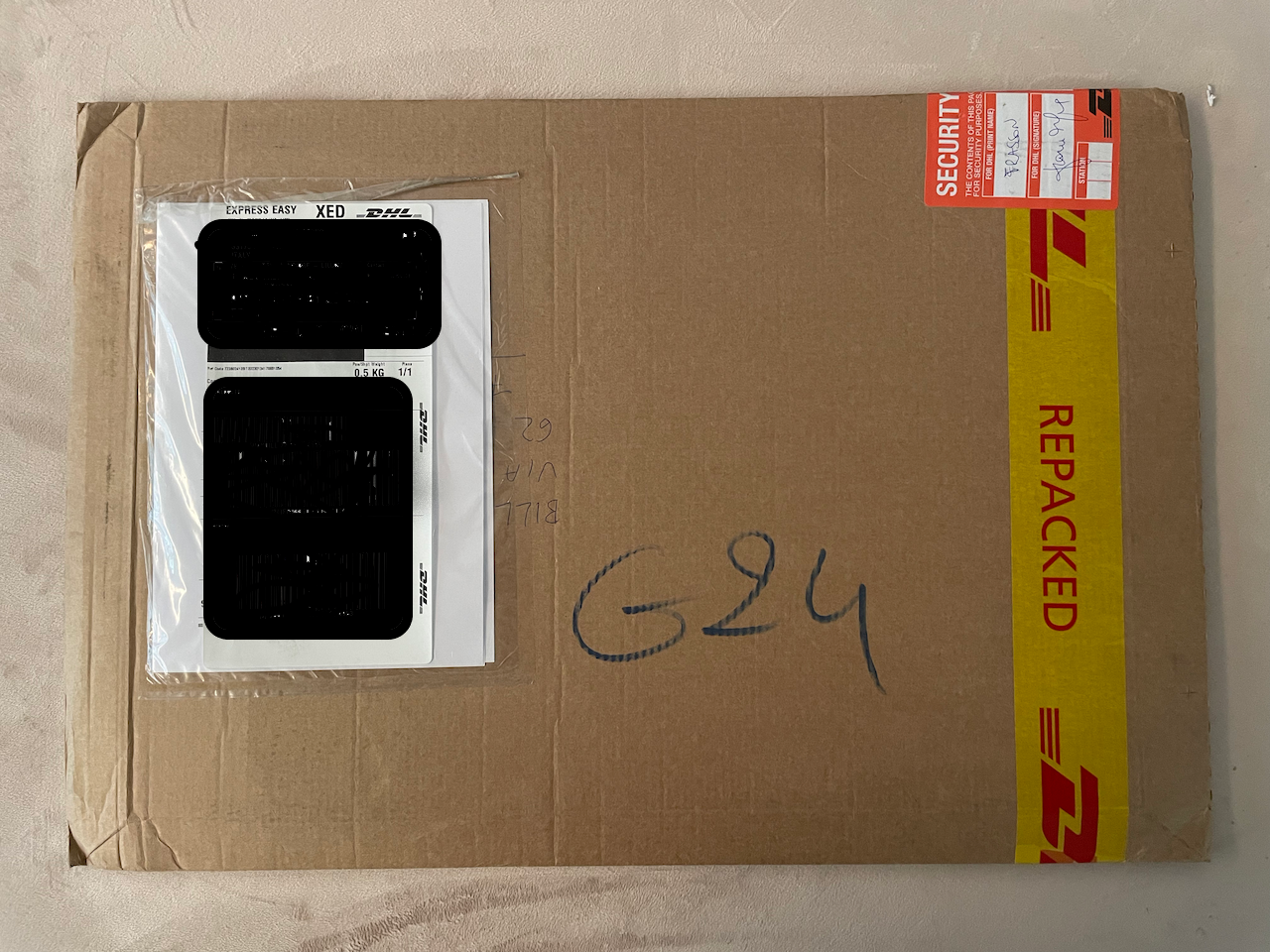
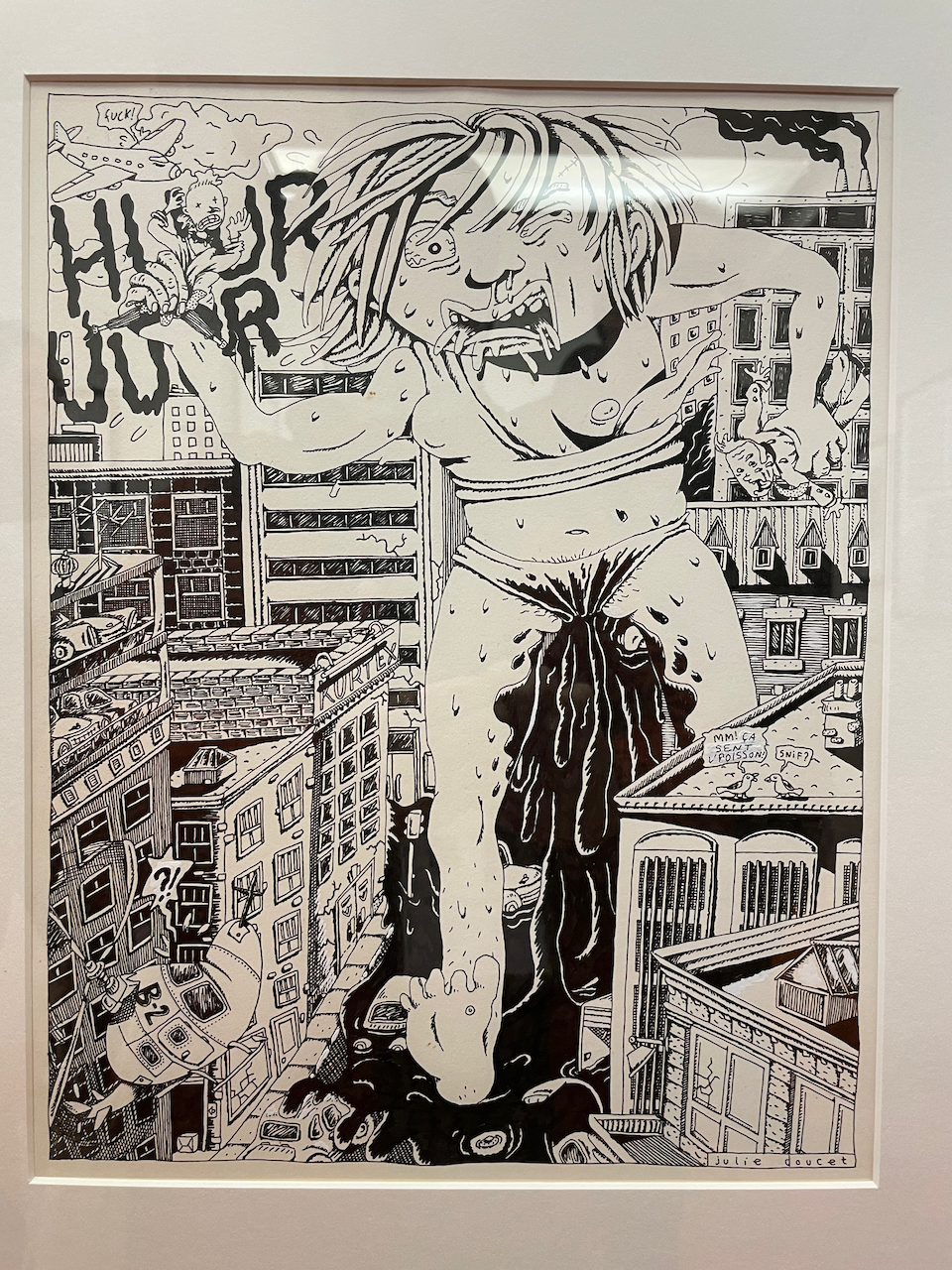





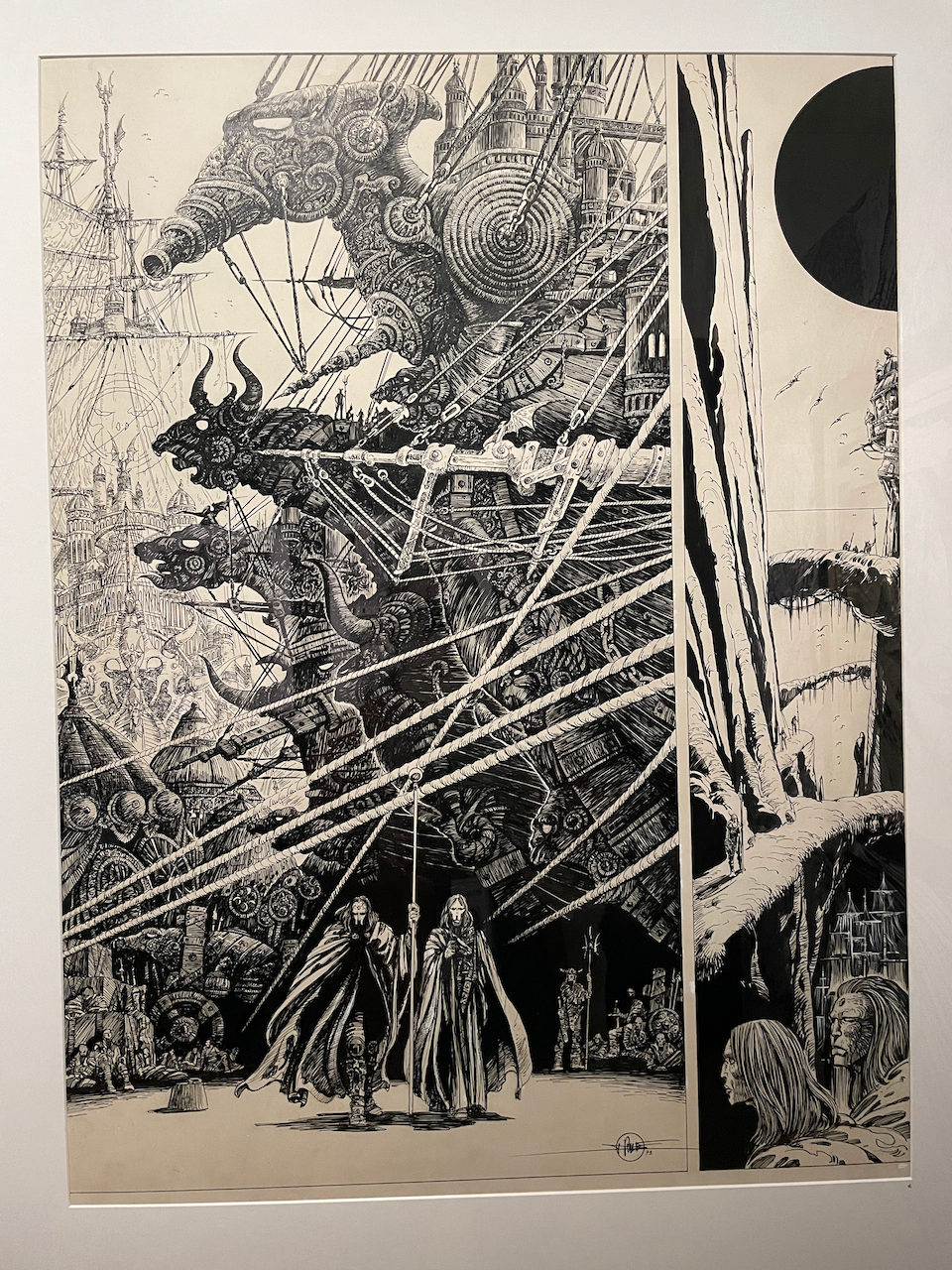
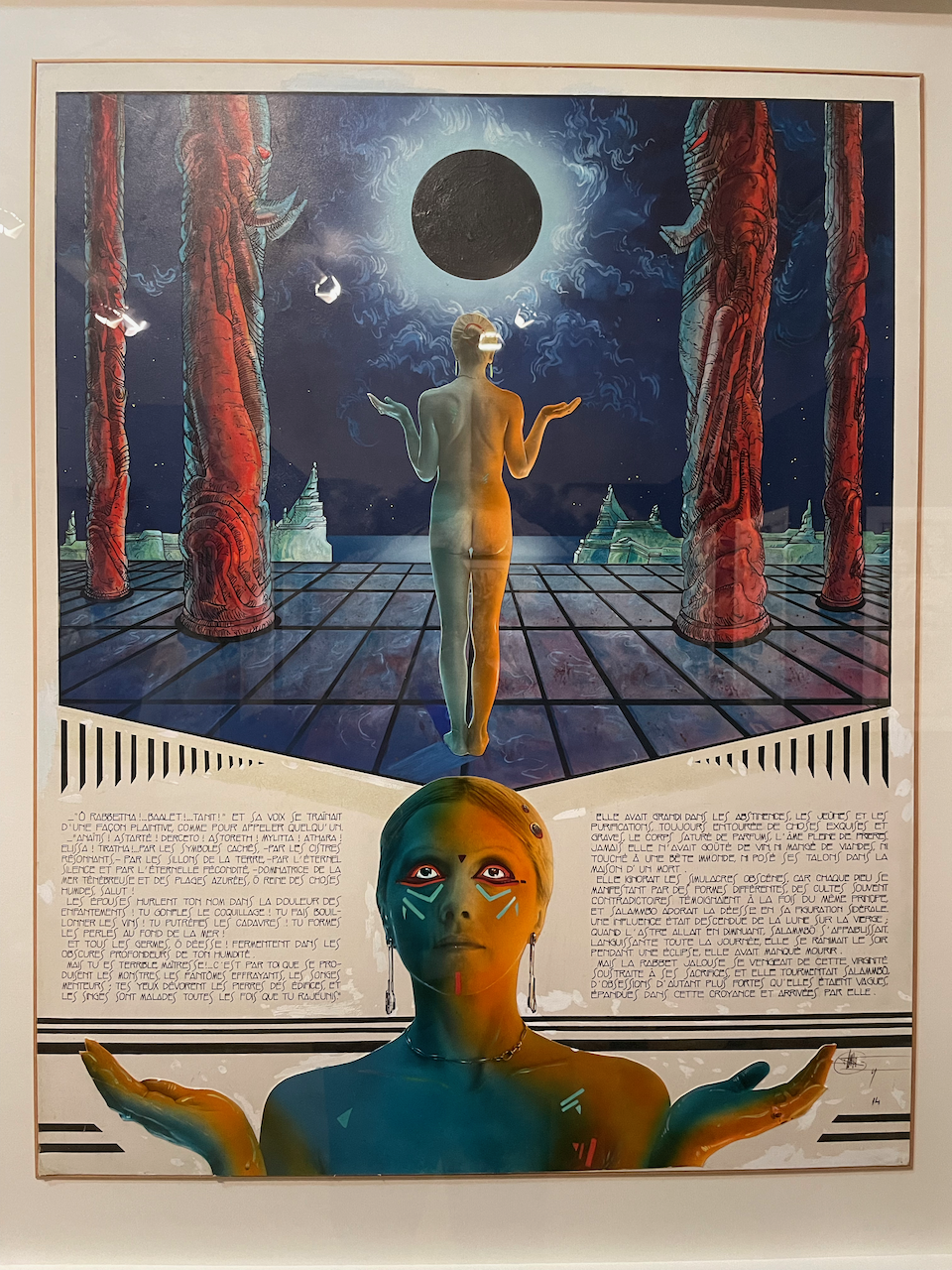

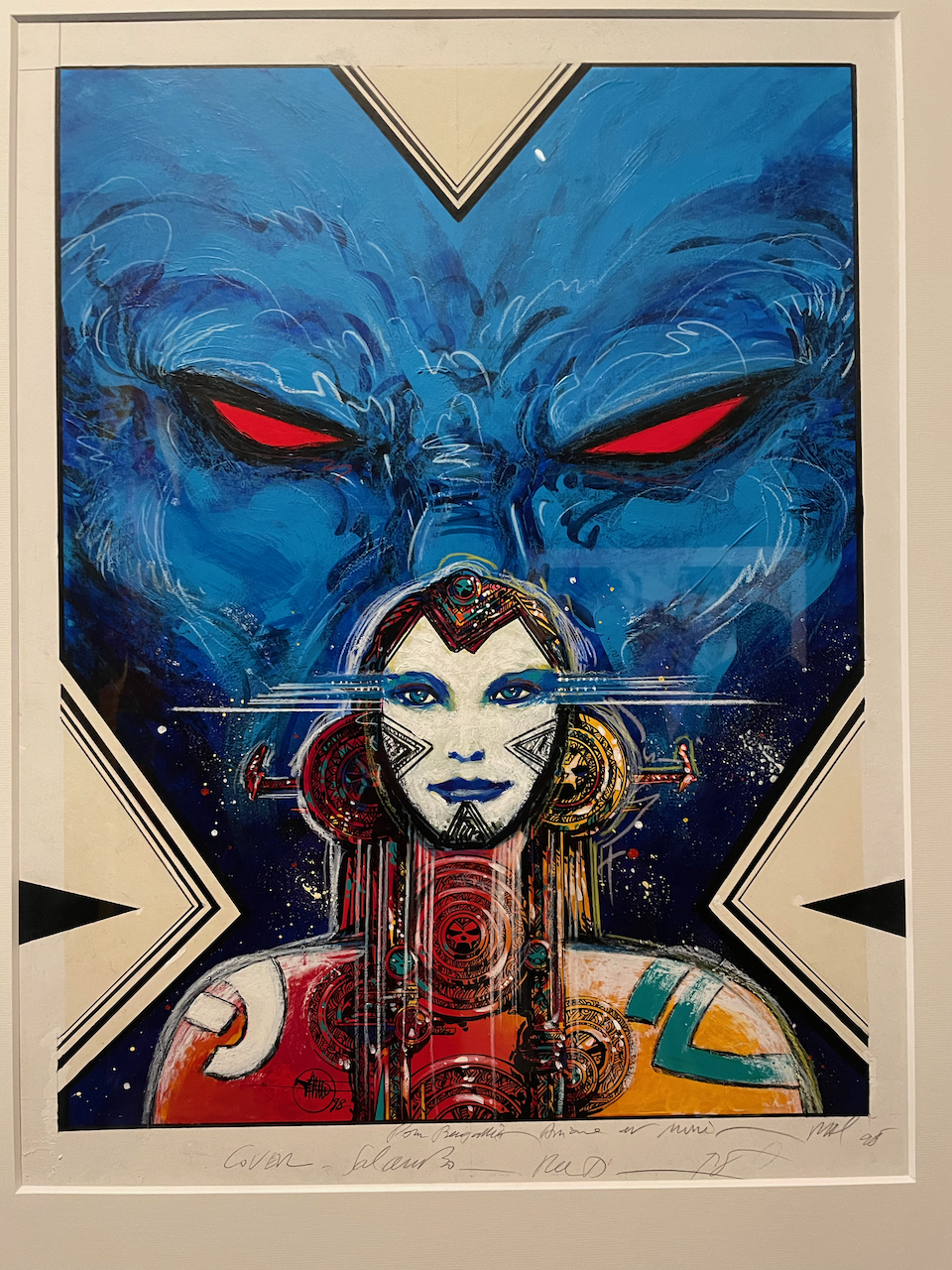
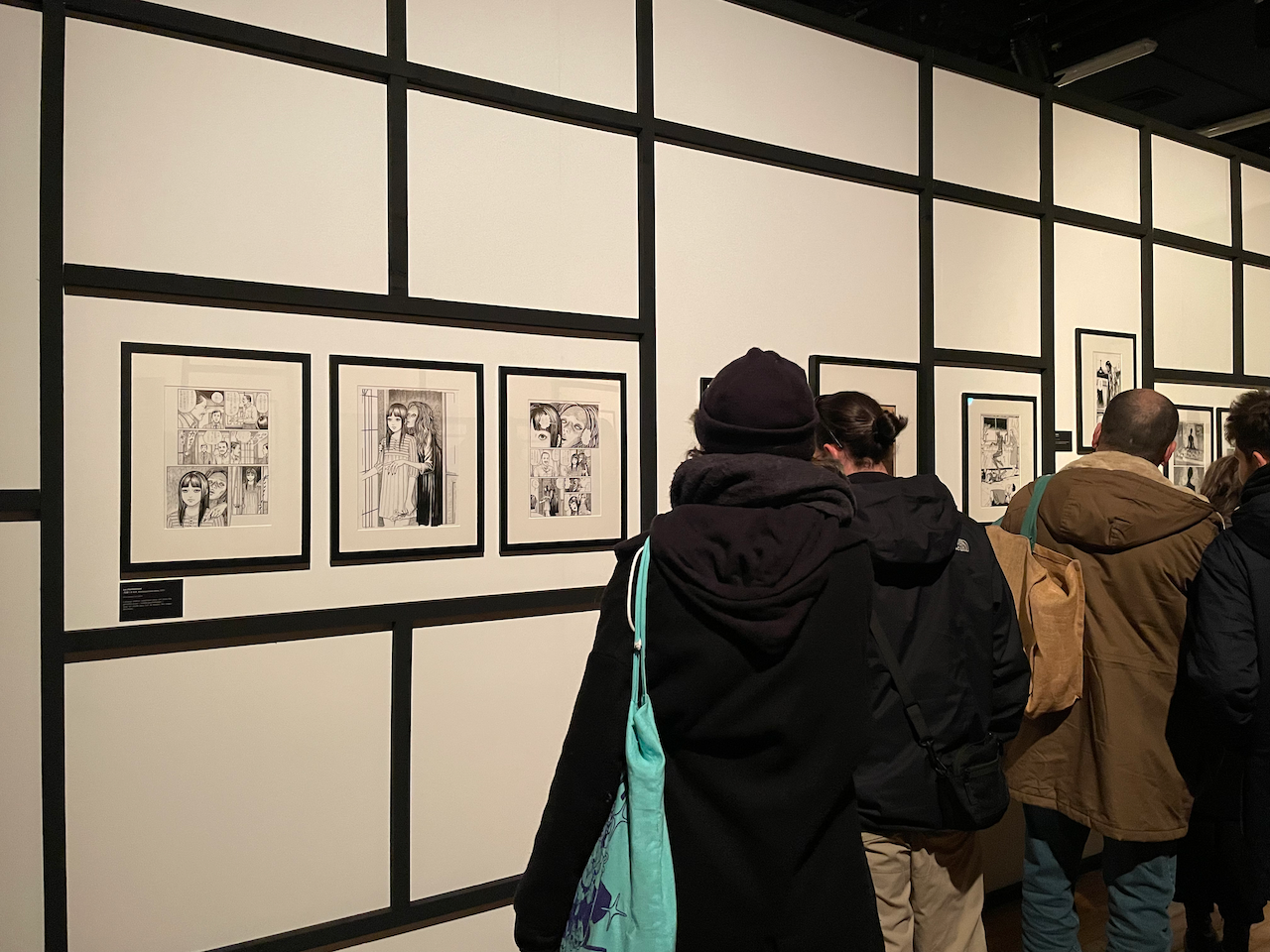



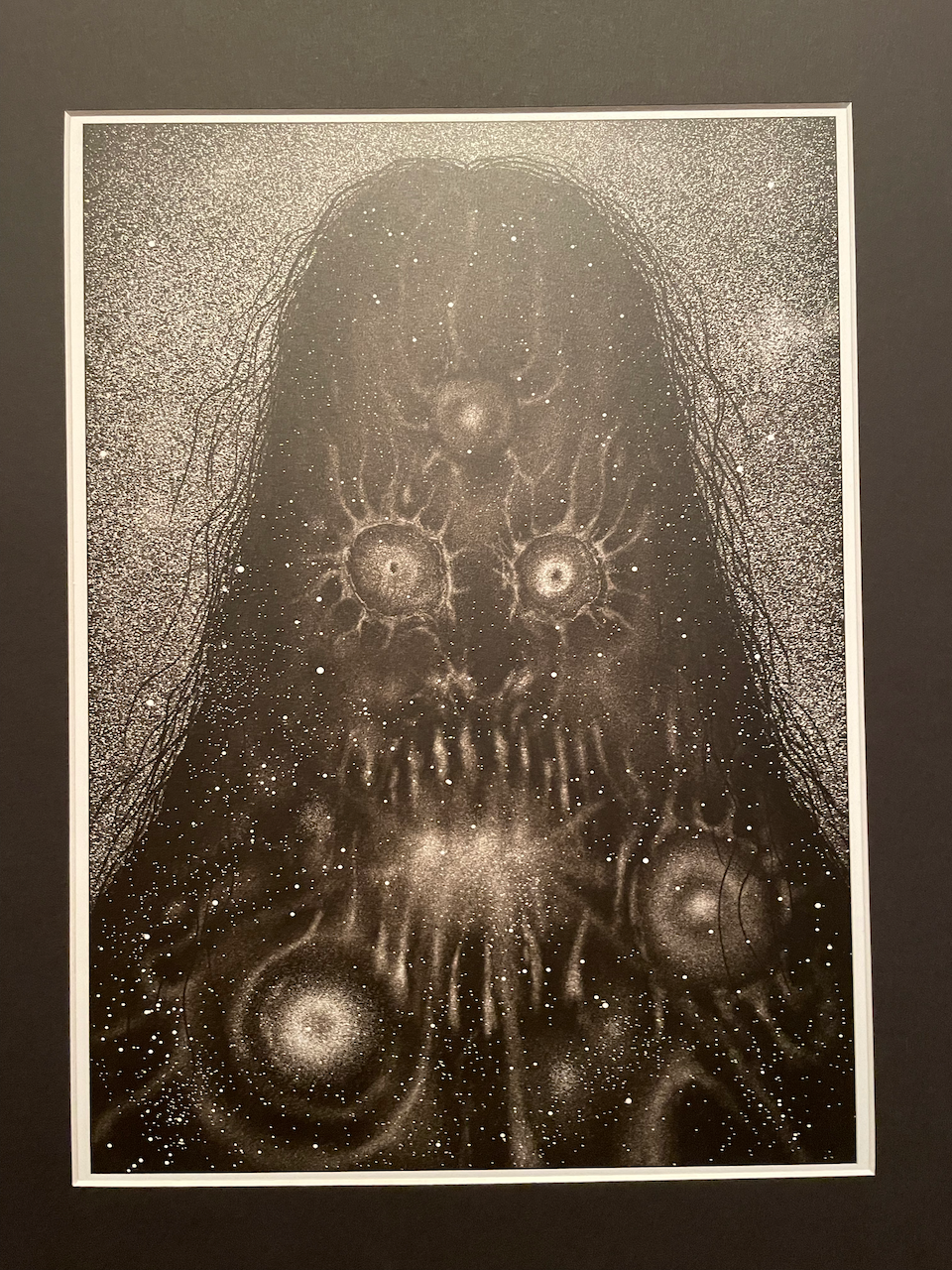
No comments:
Post a Comment